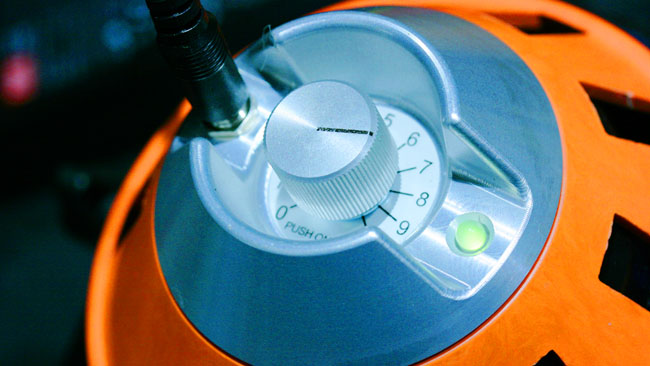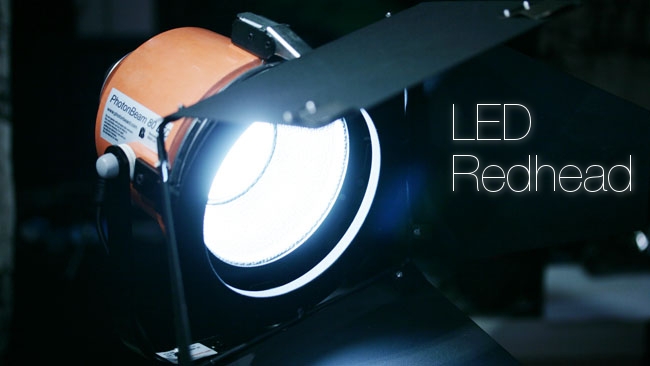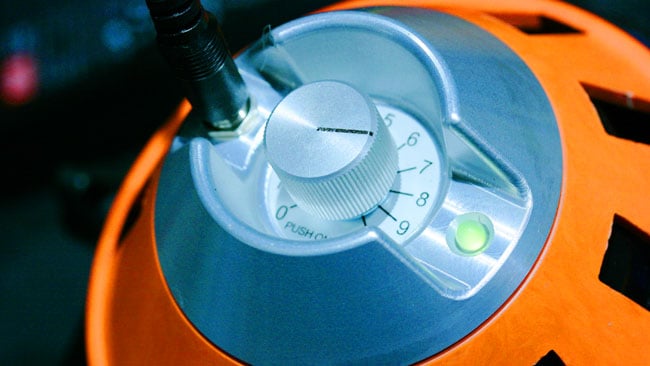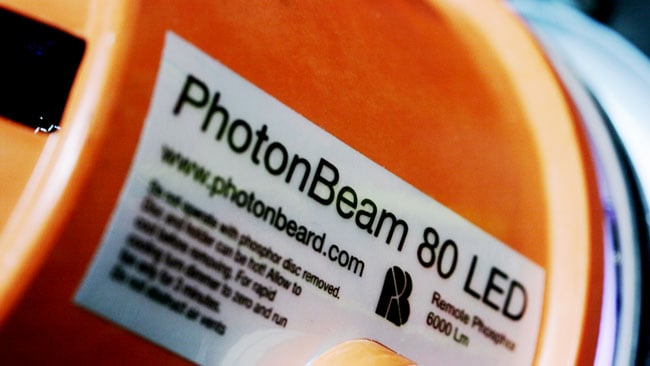
 LEDhead: Photon Beam 80 by Photon Beard
LEDhead: Photon Beam 80 by Photon Beard
Phil Rhodes looks at Photon Beard's modern update on a classic lighting instrument.
Over the last few years we've been on the verge of seeing almost an LED lighting device for every day of the week. Quality varies widely, with concerns both popular and justified over the colour rendering ability of solid state lighting, meaning that much of what's produced can be difficult to use in the most demanding circumstances.
LED lighting is a bandwagon, then, but it's been one that UK manufacturer Photon Beard has been deliberately slow to join, choosing to wait until the technology matured sufficiently to produce a product that could be used without compromise. The company is cautious about its reputation and with good reason: at over 130 years old, it was founded by Robert Beard based on a need for gas regulators for lighting in theatres and supplied the opening stock of lighting to Pinewood.
Redhead goes LED
Its first LED device is a rarity in that it's an almost direct retrofit of an established favourite: the classic redhead, which is all too easily referred to as a LEDhead. Any discussion of the redhead's origins will end up mired in imprecision so let's simply define what we're talking about: the traditional redhead is an eight hundred watt tungsten halogen open-faced light featuring a bulb in a reflector, barn doors, and most commonly is built in a red or orange-ish housing. And then there's the blonde, a 2kW equivalent in a pale brown or yellowish housing. Redheads, and to a lesser extent blondes, have been a standby of documentary and news camera crews for decades. It isn't as controllable as a fresnel, but it's smaller and lighter, and the simplicity of the optical system makes it powerful.
With budgets and schedules ever-pressurised, an LED redhead makes a huge amount of sense. It offers things that no tungsten device ever can: vastly higher efficiency, interchangeable tungsten or daylight colour temperature, daylight output while maintaining high efficiency, and dimmability without colour shift.

Colour & battery
The interchangeable colour temperature is enabled by another aspect of the light: it's a remote-phosphor LED, wherein a blue LED emitter irradiates a phosphor panel which glows to produce yellow light, filling in a complete (or rather, sufficiently complete) white light spectrum. There are advantages to this technology: the larger area of phosphor doesn't get so hot and is not so intensely bombarded with short-wavelength radiation, which means it should last longer without degrading. The larger area gives designers more flexibility in their choice of phosphors too, making it somewhat easier to manufacture, especially in circumstances where good consistency is required. What's more, the panel is interchangeable, allowing for variable colour temperature (and perhaps, in future, effects colours, or a simple diffuser for illuminating bluescreens).
Photon Beard's LED redheads consume 80 watts, which assuming a reasonable four-to-one efficiency improvement over tungsten, means they should be a bit less than half as bright as a traditional tungsten device. The upside, however, is that they can be powered by (reasonably big) batteries. The very largest camera batteries would work or perhaps, more practically, the lead-acid batteries often supplied by rental companies in miniature flight cases. Although endurance would be limited to perhaps an hour with a 96-watt-hour camera battery, this is still a boon to fast-moving productions where the option to finesse a particular set-up doesn't exist if there's a need to run cables.
Daylight matters
It's worth taking some extra time here to think about the daylight option. If we need to filter a tungsten light to daylight, we use full colour-temperature correction blue gel. With a full stop of light loss, barely 50% of the light produced gets through, and with a relatively inefficient tungsten source, the overall efficiency is woeful. Swapping a remote-phosphor panel on a Photon Beard redhead, however, is a much more effective process. In fact, most white-emitting LED devices are fractionally more efficient when emitting cooler light, since less of the blue LED output must be converted to yellow. What's key, however, is that an LED redhead with the daylight phosphor has only slightly lower total output than a tungsten redhead with full blue gel on it. Assuming that the LED is about four times the efficiency of tungsten (thus equivalent to about 320W), and the conversion filter eats a full stop of light (800W halved is 400W), we'd expect the LED to be very nearly as bright for 10% of the power. OK, few people actually choose to filter tungsten lighting to daylight, since the process is so horribly lossy, but the numbers are quite interesting.
A minor complaint
Physically, the device is very much a redhead, with the usual arrangement of barn doors, yoke and red-orange housing. The difference is at the back, where the rearmost part of the housing is replaced with a machined metal insert containing the combined dimmer and power switch, as well as the power connector. This is the first location at which we might air a small complaint: the power input is a coaxial DC power connector as used on laptops, presumably chosen for size, but it might have been nicer to see a latching power connector here. One would have forgiven Photon Beard for doing whatever was necessary to make room for this to be a four-pin XLR, given the number of options that would provide. The only other potential downside is that the LED is fan-cooled. This is an inevitable engineering necessity given the power density of the device and the size of the package, and it is quiet enough – one hopes the fans are reasonably easily replaceable should they become less quiet after a few years' normal wear and tear.
A winning package
Photon Beard charges £800 for the LED redhead, including both the daylight and tungsten phosphor panels (with a single phosphor panel it's a little cheaper, but the package is a better deal). This is representative of a bit less than two and a half times the cost of the company's tungsten redhead and about half the cost of a comparably-powerful device such as a Litepanels Sola 6, although that is a fresnel. Concerns over the rather high cost of LED can be directed at the whole market, but Photon Beard's device doesn't seem unduly expensive in context.
So, for the ENG or documentary cameraman, the LED redhead is potentially a very valuable idea, and seems well implemented. The question for the future is whether the company will apply the technological advances of this device to produce LED versions of its existing tungsten fresnels. It's a crowded market – much more crowded than the technically simpler open-faced lighting of which a redhead is an example, and one would forgive them for going either way. Perhaps more HMIs are in the future, given that the superbly-named Platinum Blonde HMI has just been released. We'll be looking at that soon. Until then, the LED redheads look good.

Tags: Production


Comments